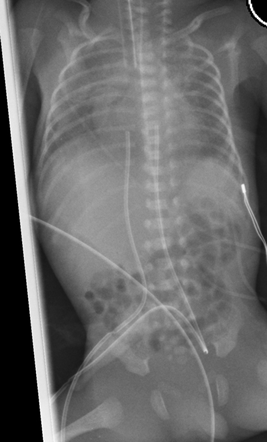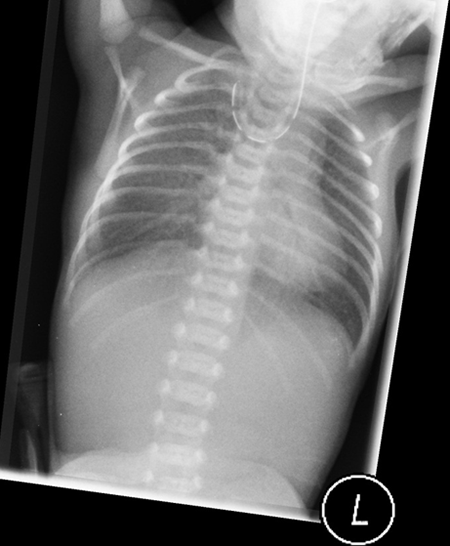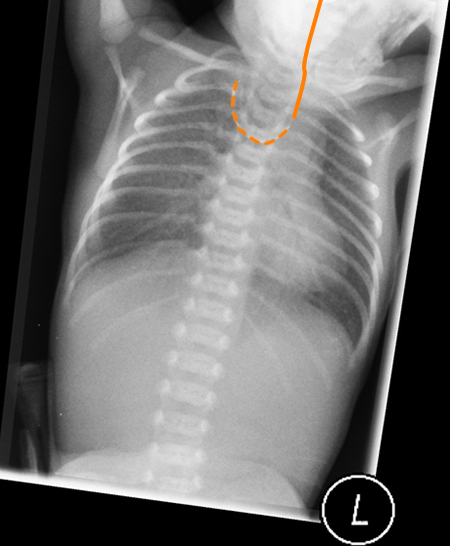6] Neonatal Catheters
Several of the lines described above are also used in neonates and children. Some lines are specifically used in the neonatal period such as umbilical lines. Also in congenital abnormalities as in a condition known as oesophageal atresia, there is abnormal development of the oesophagus, and a suction catheter known as a Replogle tube is used.
Umbilical lines
In the neonatal period, a premature or sick baby can have arterial and venous access performed through the umbilical arteries and veins which are patent at birth. Neonatologists cannulate them with umbilical artery and venous catheters to obtain blood samples, give drugs and for monitoring.

They can be differentiated on an Xray due to the fetal anatomy. On this X-ray, the umbilical artery catheter (red line) dips down towards the pelvis before ascending up the aorta as the umbilical artery joins the common iliac artery. The umbilical vein catheter (Green line),however , ascends up towards the liver as it takes the route into the left portal vein, ductus venosus and IVC.
The ET tube (Blue shaded) and NG tube ( Purple line) are correctly sited.
Replogle Catheter
A Replogle catheter is a suction tube which is specifically used in neonates with a condition known as Oesophageal atresia. The oesophagus does not develop correctly and forms an upper blind ending tube from the mouth. Secretions collect in this pouch which could collect and spill over into the trachea. A suction catheter (Replogle) tube is therefore passed at birth in the event of this diagnosis to clear secretions until surgery can be performed to correct the abnormality.

This is a baby that has a condition known as Oesophageal atresia. A tube known as a Replogle tube (blue line), which is a suction catheter, has been passed to remove the accumulated secretions. Surgery is required to correct the abnormality.


